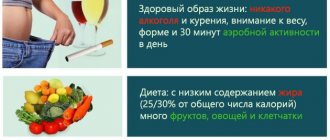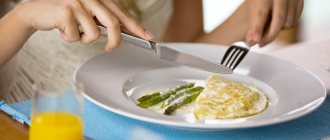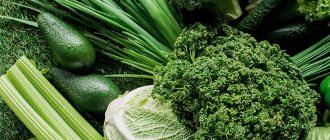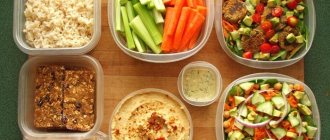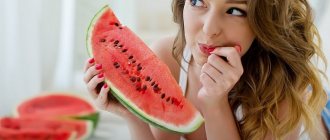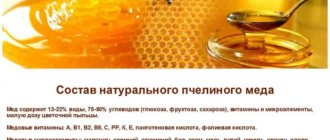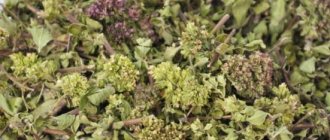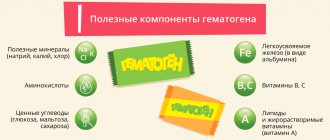08.07.2019 00:00
19607
Hypotension, as many believe, is not as dangerous as hypertension. What problems can occur with low blood pressure? In fact, such a violation is a signal that the body is not functioning normally, not receiving enough oxygen and nutrients.
Hypotension, as many believe, is not as dangerous as hypertension. What problems can occur with low blood pressure? In fact, such a violation is a signal that the body is not functioning normally, not receiving enough oxygen and nutrients. This may also indicate fragility of blood vessels and loss of elasticity. Hypotension manifests itself in the form of dizziness and sometimes loss of consciousness, ringing in the ears, fatigue, tiredness, nausea, and impaired concentration. With such symptoms, you should definitely consult a doctor as soon as possible.
When diagnosing hypotension, the doctor prescribes drug treatment, which can be supplemented with “folk” remedies, increasing efficiency. The easiest way is to introduce foods that increase blood pressure into your diet, in particular fruits. Some of them will not only satisfy the need for sweets, but also help get rid of (or at least minimize) the consequences of hypotension.
Products that reduce blood pressure
Hypertension is a systemic increase in blood pressure greater than 140/110 mm Hg.
Art. This disease requires not only constant use of medications, but also lifestyle adjustments. Diet for hypertension is very important. It will help lower blood pressure and control your health. The diet of a hypertensive patient should be filled with foods that contain a lot of plant-type fiber. It should be consumed by all people, as it contains many vitamins and minerals. The factor that increases blood pressure is atherosclerosis. Therefore, products with a high content of lipotropic substances are additionally important. They contribute to the removal of cholesterol, which forms atherosclerotic plaques, and its breakdown.
Foods that lower blood pressure must contain protein, but in adequate quantities. Only in this case does it contribute to normal vascular tone, and even normalization of the functioning of the nervous system, which allows the body to be more resistant to psycho-emotional shocks. And this is the prevention of high blood pressure.
Also, hypertensive patients need to eat foods that contain magnesium, calcium, and potassium in order to increase their amount in the body. They improve the functioning of the heart and blood vessels. Calcium is absorbed only if it enters the body along with protein. That is why it is recommended to consume more dairy and fermented milk products.
Other foods that lower blood pressure are those that contain polyunsaturated fatty acids. They are found at the highest level in fish and other seafood.
These fatty acids help reduce the absorption of animal fats and reduce cholesterol, which means they are needed to lower blood pressure. A strict diet for hypertension is contraindicated, as it can be harmful to health. This disease requires a balanced, healthy diet. Therefore, it is impossible to lose weight with the help of special limited diets, not to mention fasting. With high blood pressure, you need to constantly replenish your reserves of nutrients.
Necessary products for hypertension:
- Lean meats - veal, beef, chicken, turkey. Poultry meat should be consumed without skin.
- Soups with vegetable broth, dairy first courses are also useful.
- Various seafood. Shrimp, squid, and seaweed are especially useful.
- Dairy and fermented milk products. It is better that they have a low fat content - cottage cheese, kefir, yogurt. You should also drink skim milk. It is recommended to eat sour cream only as part of other dishes. Hard cheese should be unsalted and low-fat; other varieties should not be eaten if you have high blood pressure.
- You should consume no more than 20 g of butter; it is recommended to add it to dishes.
- You should eat a lot of greens, as they contain vitamins necessary for vascular tone (C, group B).
- Fresh vegetables. It is very important for hypertensive patients to eat zucchini, Jerusalem artichoke, and pumpkin, as they contain substances that remove cholesterol. You should also eat other vegetables in the form of salads dressed with vegetable oil. In the case of diseases of the cardiovascular system, it is necessary to consume green peas and legumes, as they contain a lot of magnesium.
- Potatoes are best eaten baked.
- Sour berries and fruits, as they contain pectin. It is recommended to eat more gooseberries, apples, plums, figs, and dates.
- Dried fruits are all very healthy.
- Eggs can be eaten boiled or as an egg white omelet. It is recommended to use them about 4 times a week.
Among the sweets, mousses made from berries and fruits, as well as jelly and homemade marmalade will be useful. Honey and jam should be eaten in limited quantities.
The question “what foods reduce blood pressure” is often asked by therapists. They, in turn, provide not only a detailed list of dishes, but also advise what seasonings can be used to diversify the menu. These may include bay leaf, dried parsley and dill, cumin, vanillin, cinnamon and citric acid. Nutrition for hypertension should be comprehensive. For drinks, you can drink tea with lemon and milk, but the brew should not be very rich; coffee lovers can drink chicory or barley drink. It is also very useful to drink compotes and decoctions.
Fruits to lower blood pressure
What fruits lower blood pressure? Not all of them will be useful for hypertensive patients, although they help stabilize blood pressure. For example, grapes and raisins obtained from them, dates will contribute to weight gain due to their high carbohydrate content. But the bulk of the fruits available in our latitudes will only bring benefits to the patient.
Kiwi
The first representative that helps lower blood pressure is kiwi. Its pulp contains almost all types of vitamins, minerals and long-chain acids. Kiwi fruits promote active breakdown of fat reserves and weight loss, thereby reducing the overall load on the circulatory system and heart muscle. The result is normalization of blood pressure by losing weight and minimizing the risk of thrombosis.
Important! Both the pulp itself and the juice obtained from it will be equally useful for hypertensive patients.
Bananas
Banana pulp contains a large amount of useful substances. First of all, this concerns potassium, a trace element necessary for the normal functioning of the myocardium. In addition, bananas have a strong hypotensive effect, which is good for the heart.
But only fully ripened fruits will be beneficial for the body. They can be added to cocktails, smoothies, cereals, dessert dishes, etc. To fully satisfy a person’s daily requirement for potassium, you need to eat two bananas daily. Bananas, despite their high potassium content, should not cancel out the intake of Panangin or Asparkam prescribed by the doctor.
Persimmon
The properties of persimmon that normalize high blood pressure levels are due to its diuretic effect. A decrease in circulating blood volume provides a hypotensive effect and also helps reduce edema. With daily consumption of persimmon, the walls of the blood vessels are strengthened, the elasticity index increases, which helps to normalize the functioning of the myocardium.
After reaching the age of 50, cardiologists recommend including persimmon in your daily diet. The fruit not only normalizes high blood pressure, but also acts as a preventive measure for the formation of atherosclerosis and diseases of the cardiovascular system.
Tangerines
Tangerines are good for lowering blood pressure. Regular consumption of tangerines promotes smoother blood flow and expansion of the lumen of blood vessels. The result is normalization of blood pressure indicators. Thanks to the dietary fiber, vitamin C, pyrodoxine (B6) and potassium present in the pulp, there is an improvement in the general condition of the circulatory system.
The likelihood of developing ischemic conditions and atherosclerosis is reduced. In addition, the pulp contains a large amount of molybdenum (necessary for strengthening tooth enamel) and other substances necessary for humans.
Plum
Plum contains a large percentage of vitamin P and substances similar in effect to it. The fruit helps to quickly lower blood pressure. An additional effect is strengthening the walls of blood vessels. The coumarins contained in plums prevent the development of thrombosis.
Regular consumption of plums helps:
- cleansing the blood of waste and toxins;
- improvement of digestive processes and intestinal motility;
- removal of “bad” cholesterol and salts.
Diabetics and obese people should avoid plums in any form - fresh or dried. The product is distinguished by its high calorie content.
Pomegranate
Pomegranate contains a high percentage of long-chain organic acids, salts and tannins. The decrease in blood pressure occurs due to the amino acids present and a fairly strong diuretic effect. To reduce and stabilize blood pressure, you need to drink pomegranate juice daily for two to three weeks.
Pomegranate juice helps stabilize blood pressure levels
The drink increases the tone of the walls of blood vessels, resembling in its effects drugs from the group of angiotensin-converting enzyme (ACE) inhibitors. As a result, the lumen of blood vessels expands and blood pressure levels decrease. An equally important result of regular consumption of pomegranate juice is the normalization of coronary circulation. This has a positive effect on the functioning of the entire circulatory system as a whole.
Contraindications:
- all types of gastritis;
- ulcerative pathology;
- gastroesophageal disease.
Important! To prevent the development of heartburn, the juice should be slightly diluted with alkaline mineral water.
Apricots
Apricots contain a lot of potassium, so the fruits will be useful not only for hypertension, but also for other pathologies of the heart and blood vessels. It is recommended to include apricots in the menu - eating 5-6 apricots daily - if the patient has been taking diuretic drugs systemically for a long time (this is especially true for thiazide drugs).
Fresh fruits can be replaced with juice - ½ cup, and in winter - dried apricots (10 - 12 pieces). If you have hypertension, you need to eat as many fresh apricots as possible during the season. The phosphorus, potassium and magnesium present in them help lower blood pressure and stimulate the cognitive functions of the brain.
Coconut
Coconut milk is beneficial for hypertension. It contains magnesium, potassium and calcium. Coconut milk has the ability to normalize blood pressure, so you can drink it with both low and high blood pressure.
Green apples
Fruits provide the body with large amounts of ascorbic acid and vitamin P. They will be very useful for people not only with hypertension, but also with atherosclerosis (active destruction of cholesterol plaques occurs).
Regular consumption of green apples solves the following problems: lowering blood pressure levels, reducing the severity of headaches, eliminating noise in the head, and dizziness. To normalize blood pressure, it is advisable to combine green apples with rice. This will help not only bring blood pressure back to normal, but also get rid of cardiac edema.
Dried fruits
Dried fruits (dried fruits) are also good for lowering blood pressure. This is explained by the high content of potassium in the pulp, which helps improve the functioning of the cardiovascular system.
Dried fruits contain vitamins B1, B6, tocopherol (E), potassium, folic acid, magnesium - they help reduce high blood pressure, expand the lumen of blood vessels, and restore heart rhythm
With regular consumption of dried fruits, cholesterol levels return to normal. The product helps improve the well-being of patients with refractory hypertension, a condition in which it is not possible to normalize blood pressure levels with the help of medications.
Diet principles
It should be noted that the diet for hypertensive patients is the same for both women and men. Proper nutrition for high blood pressure is the key to health for all people.
In order for your diet to help lower blood pressure, you need to adhere to the basic principles of the diet:
- Meat is available in limited quantities. It’s good if a person eats meat 2-3 times a week.
- You can eat only one yolk per day, but at the same time you can eat about 2-3 egg whites.
- It is necessary to minimize the consumption of sugar, since it is a refined carbohydrate, which can increase blood pressure levels.
- It is advisable that vegetables be present in the diet daily, in an amount of about 400 g.
Nutrition for arterial hypertension should occur on a fractional basis. You need to eat food 5-6 times a day, but in smaller portions than usual. This allows you to reduce the load on the body, in particular on the cardiovascular system. If you adhere to this diet, a person will not gain excess weight, since obese people often have a history of arterial hypertension. Another important aspect of the diet is that dinner should take place no later than 3 hours before bedtime.
For hypertension, it is important not only which foods lower blood pressure, but also how to prepare them. You can use all methods except frying. Boiled, steamed and baked foods are allowed. It is not recommended to frequently eat dishes prepared by stewing.
For arterial hypertension, the diet excludes fried foods, since during the frying process fats release breakdown products. It is these substances that are very harmful to blood vessels, they can even provoke the manifestation of malignant neoplasms.
Salt is a spice that negatively affects blood vessels, and its amount is greatly reduced during a diet for hypertension. It is recommended to consume up to 5 g of salt per day. It is this that causes vasospasm, increases blood volume, and this leads to increased blood pressure. Salt retains fluid in the body.
A cholesterol-lowering diet for patients with hypertension should include the consumption of certain fats. In this case, it’s not even so important how many people consume them, the main question is what kind of fats they are.
All trans fats are strictly excluded from the diet of patients with hypertension. They are found in different foods:
- sausage and frankfurters;
- meat;
- hard cheese;
- ice cream.
Products that lower blood pressure in this case are: fish, olive oil, you can take fish oil separately. The fats contained in these products are very healthy.
Nutrition for high blood pressure should consist of foods that are rich in vitamins and microelements:
- Vitamin C helps strengthen the walls of blood vessels and also has anti-atherosclerotic properties. It should also be noted that it helps strengthen the body's defenses.
- B vitamins also act on vascular walls, relieving their spasm, and protect blood vessels from the formation of atherosclerosis plaques in them.
- Iodine is important for hypertension; the diet for hypertension should include foods high in iodine, as it prevents the progression of atherosclerosis.
- Phosphorus improves the functioning of brain vessels.
- Calcium is able to exert its effect on blood vessels, maintaining them in normal tone.
- Potassium is very important in hypertension because it has a vasomotor effect and is a sodium antagonist.
Potassium is a special microelement for arterial hypertension. Sometimes nutritionists recommend doing potassium fasting days. But it is important that the diet plan for that day is prescribed by a doctor, depending on the degree of pathology. With hypertension and diabetes, it is important to take into account the amount of potassium entering the body and insulin in the blood. If there are no simple carbohydrates in the body, insulin levels will decrease.
What fruits increase blood pressure?
The menu for hypotonic people should include fruits of red, yellow, orange and green colors.
Lemon
If you don't like it in its natural form, add a slice to your tea. This product will not only help your blood pressure rise, but will also have a beneficial effect on the heart and blood vessels and nourish cells with vitamin C.
Grape
In summer it is recommended to eat as many grapes as possible. It perfectly eliminates the symptoms of hypotension and strengthens the body's defenses. In winter, raisins should be present in the diet. It contains a huge amount of beneficial acids and has an antioxidant effect. Raisins effectively combat symptoms of low blood pressure and help normalize it. However, it should be remembered that the daily dose of this dried fruit should not exceed 80 g. Raisins are contraindicated for people with stomach ulcers.
Pear
The fruit that increases blood pressure is pear. It not only has an excellent taste, but also has a diuretic effect, helping to remove harmful substances from the body. Pear is a storehouse of vitamins and minerals that normalize the functioning of the heart and blood vessels, and thanks to glutathione, blood pressure is equalized. This fruit is recommended as a preventive measure for people who are at real risk of having a stroke. It is important to remember that only pears that are fully ripe are “effective”. Experts say that to achieve good results, you need to eat them in the morning on an empty stomach, washing down with a glass of warm boiled water.
Dates
A few dates help you quickly recover from an attack of hypotension. They can be eaten as a sweet dessert or as part of a dish. This exotic fruit contains many useful salts, minerals, amino acids, and sucrose. It helps you get full quickly and get rid of the feeling of hunger for a long time, gain strength and energy.
Dried apricots
One of the main advantages of dried apricots is their availability at any time of the year and reasonable price. It contains various amino acids and minerals (for example, potassium, iron). It should definitely be on the menu of people who have low blood pressure - a chronic condition that manifests itself in the form of gradual changes.
Among other fruits that increase blood pressure, it is worth noting:
- pomegranate;
- apricot;
- figs;
- prunes;
- white or blue plum;
- mango;
- bananas;
- sugar apple;
- avocado;
- kiwi;
- orange;
- grapefruit;
- melon;
- quince;
- lime.
Table No. 10
There is a special diet for hypertension and atherosclerosis - table No. 10. Its main criteria are avoidance of salt consumption, and you should also drink no more than 1.2 liters of liquid per day. Another mandatory measure of the tenth diet is reducing the calorie content of food. For hypertension, eating according to these rules will help saturate the body with essential microelements. These substances help normalize fat metabolism, so that they are not deposited in the liver and blood vessels.
That is why diet therapy involves eating foods that are quickly digested and prepared only by baking, boiling or steaming. Proper nutrition for hypertension should contain a certain amount of calories. The calorie content of food eaten should not exceed 2500 kcal. in a day. It is better to cancel salt or reduce it to 4 g per day.
The exact scheme of the daily menu should include about 70 g of fat (20% of which comes from vegetable fats), carbohydrates should be about 400 g, and proteins should be 90 g (no more than 50% of which should be of animal origin). For hypertension, a diet according to these rules is necessary, as it will prevent the development of atherosclerosis.
It should be noted that you should not eat if you have hypertension:
- Fresh baked goods. A diet for arterial hypertension involves eating stale, slightly dried bread, which is made from flour with bran.
- Baked goods and puff pastry are prohibited, as these products contain sugar and margarine, which are contraindicated for hypertension and atherosclerosis.
- Duck and goose meat, offal.
- Fatty dairy products, salty cheese.
Added to the list of what you cannot eat are sauerkraut, salted and pickled vegetables, raw onions and garlic, radishes, mushrooms, spinach, and sorrel. You can't eat lard either.
The high blood pressure diet suggests that the meat should first be boiled in one water, which should be drained after the meat has boiled. Next, it is boiled in new water, and only after that the dish can be eaten. Meats allowed include turkey, chicken, veal, beef, and rabbit.
Diet for arterial hypertension No. 10 allows pasta from durum wheat and cereals. Only their preparation must be correct - cook with water or milk, without adding salt and sugar. This diet for stage 2 hypertension is also effective, and medical practice proves this.
